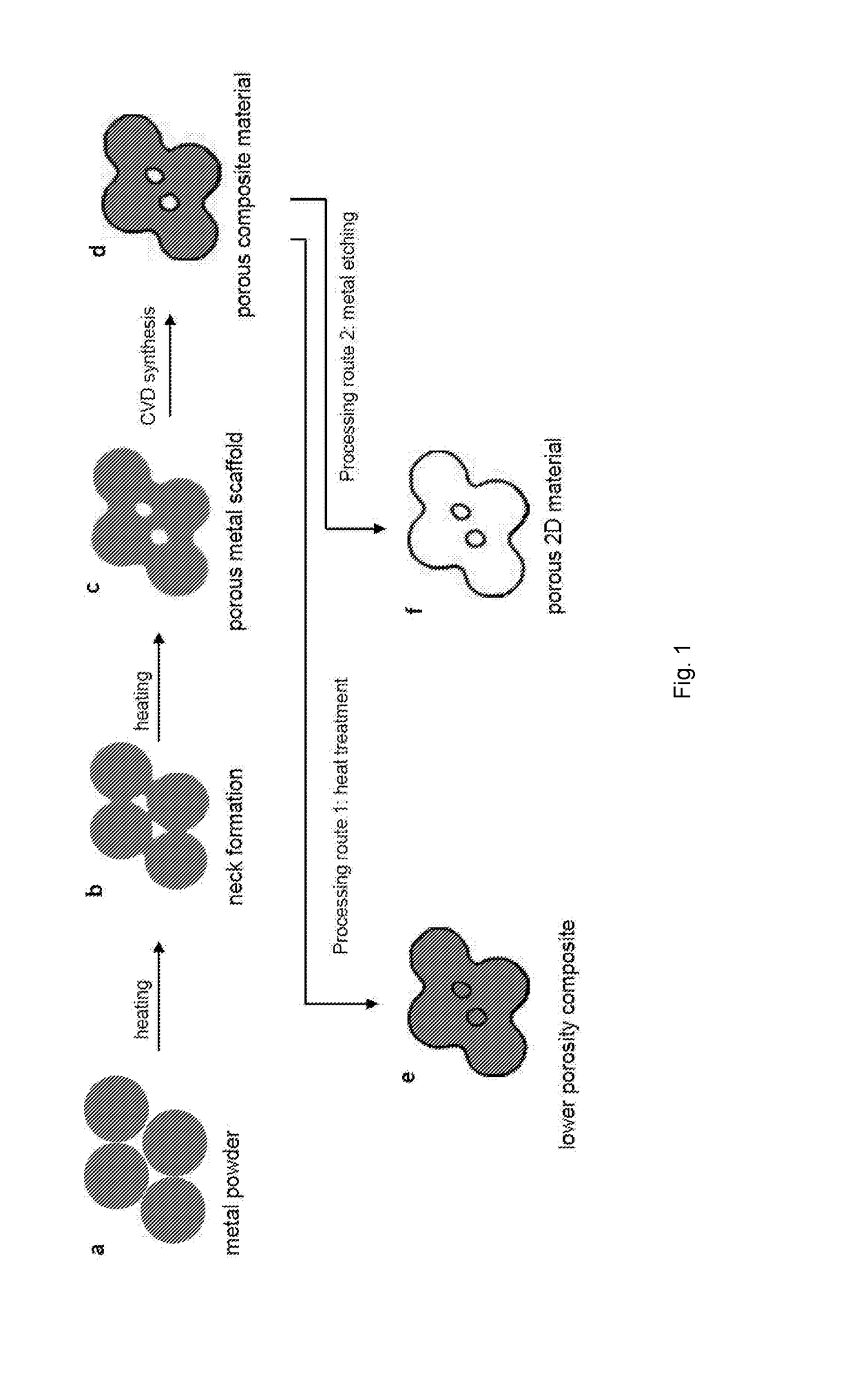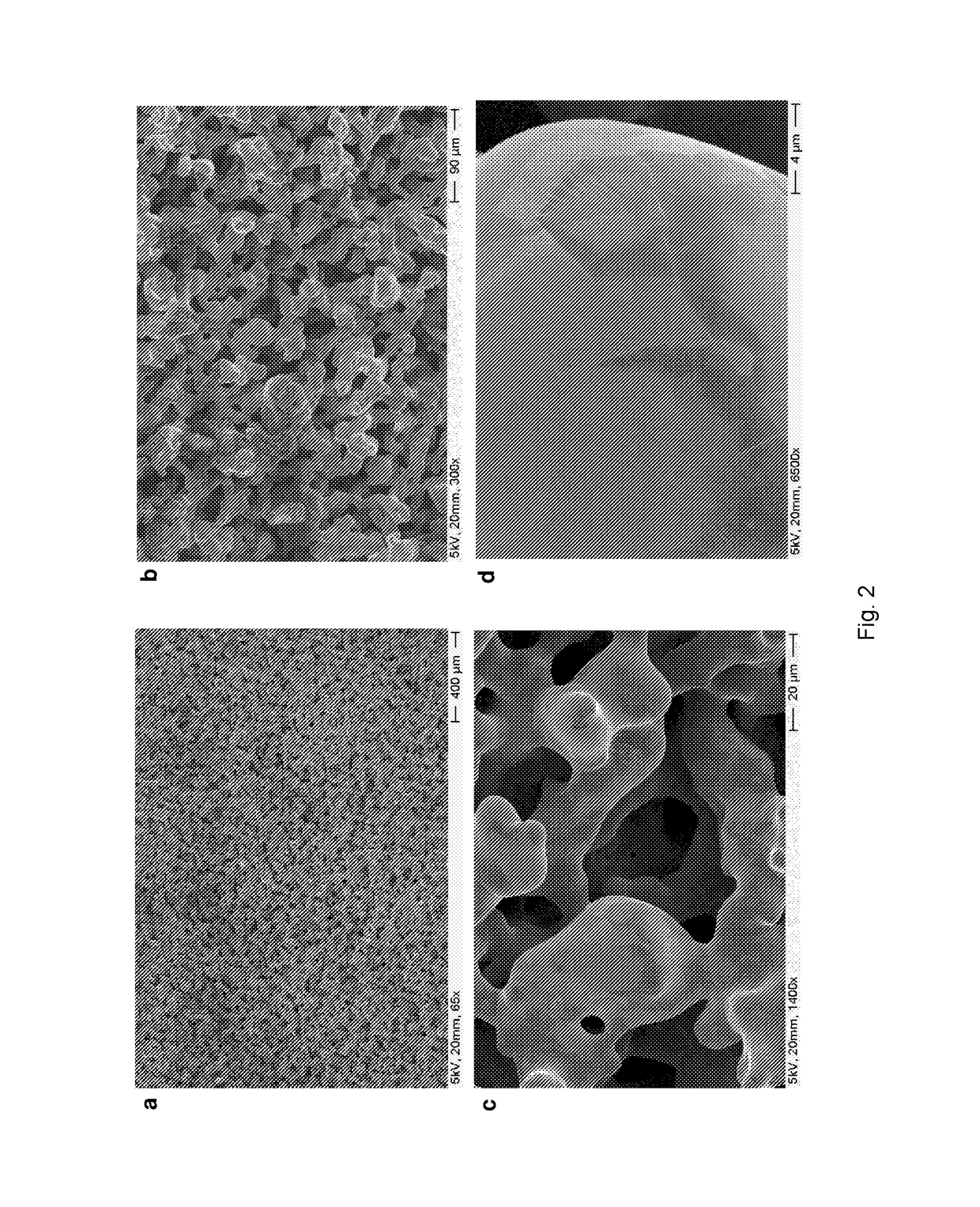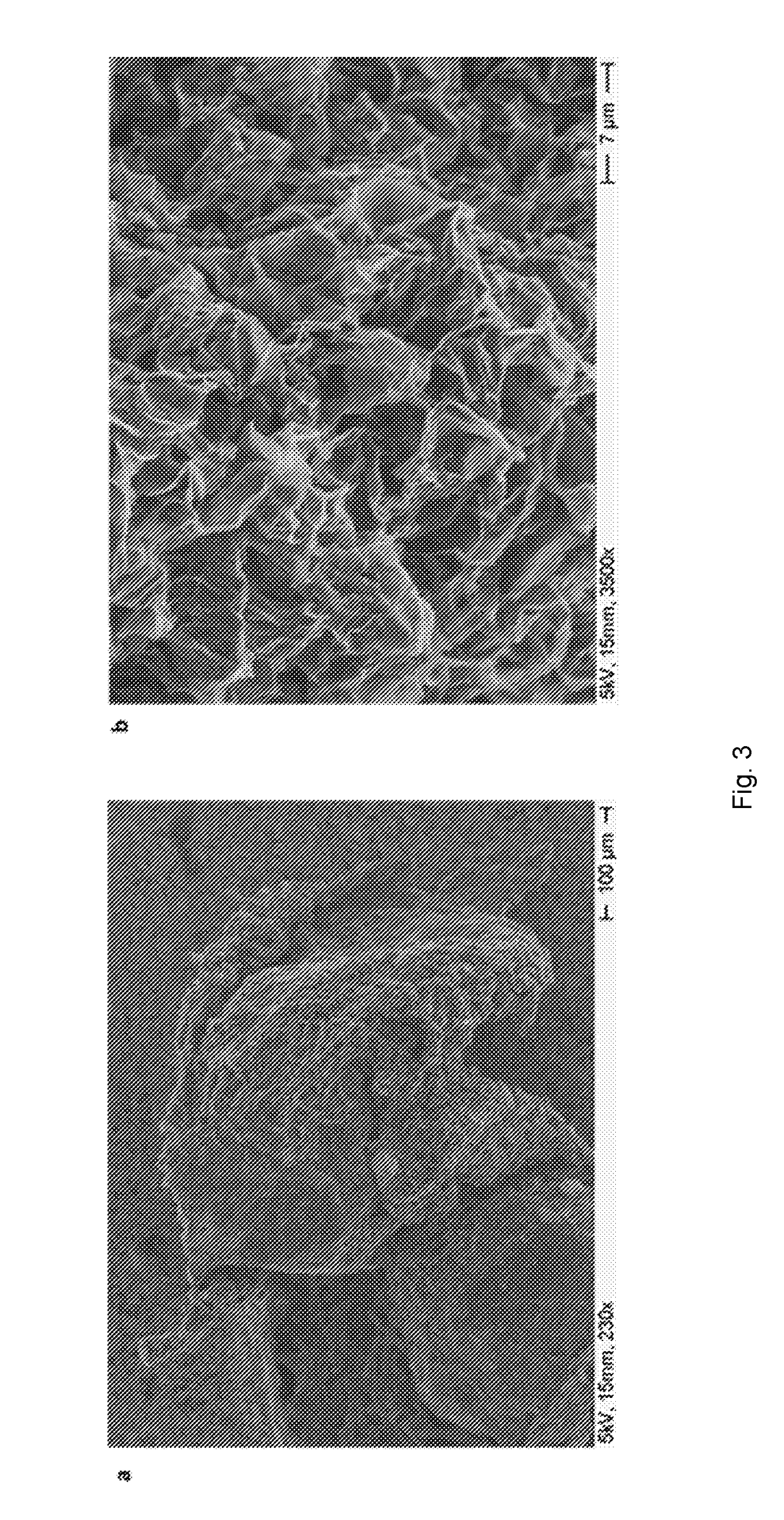Porous materials comprising two-dimensional nanomaterials
a nanomaterial and porous material technology, applied in the direction of electrode manufacturing process, catalyst activation/preparation, metal/metal-oxide/metal-hydroxide catalyst, etc., can solve the problems of inability to produce high-quality materials in bulk at low cost, and the technique is not readily scalable, so as to achieve convenient scalable effect and low cost of conductan
- Summary
- Abstract
- Description
- Claims
- Application Information
AI Technical Summary
Benefits of technology
Problems solved by technology
Method used
Image
Examples
example 1
Formation of a Copper-Graphene Porous Composite Material
[0067]A copper scaffold was first prepared by heating a copper powder in the furnace of a CVD chamber. Graphene was subsequently synthesised on the copper scaffold by CVD to form a porous composite material.
[0068]A copper powder composed of copper particles having a particle size of 14-25 μm and spheroidal shape (Sigma-Aldrich, 99% purity) was sonicated in hot (50° C.) acetone in an ultrasonic bath (Ultrawave model U1250D; 30-40 kHz) for 30 minutes to remove organic carbonaceous impurities. The acetone was then replaced by deionised water and sonicated for a further 30 minutes. The resulting wet powder was then dried in an oven at 100° C. for 12 hours.
[0069]15 g of the dried copper powder was loaded into an alumina boat with dimensions 80 mm×13 mm×9mm, which was in turn loaded into the reactor tube of a CVD apparatus. The CVD apparatus consisted of a gas system of three gases: CH4, H2 (99.995% purity) and Ar (99.999% purity) co...
example 2
Conversion of a Copper-Graphene Porous Composite Material to a Porous Graphene Material
[0073]A copper-graphene porous composite material was prepared following the procedure described in Example 1, and then converted to a three-dimensional porous structure of graphene. In order to remove the copper from the composite material, the material was placed in a 1 M ammonium persulfate solution (prepared from 98%, (NH4)2S2O8, Sigma-Aldrich, that was dissolved in deionized water) for 48 hours. For more rapid etching of the copper, hot (e.g. 80° C.) ammonium persulfate or iron chloride could be used. When the copper was sufficiently etched, the graphene was visibly present in the etching solution in the form of a three-dimensional structure. After etching was complete, the etching solution was replaced by water to remove the salts from the graphene structure. This was done for 48 hours in total, with the water replaced after 24 hours.
[0074]The resulting porous graphene structure was characte...
example 3
Conversion of a Copper-Graphene Porous Composite Material to a Composite Material of Reduced Porosity
[0076]A copper-graphene composite material was prepared following the procedure described in Example 1. However, instead of cooling the material after formation of graphene, the reactor tube was purged with oxygen-free argon and the temperature of the furnace was raised to 1070° C. for 2 hours so that the copper scaffold restructured. The furnace was then slowly shifted away from the alumina boat so as to prevent thermal outer surface contraction, yielding a less porous copper-graphene composite material.
PUM
| Property | Measurement | Unit |
|---|---|---|
| particle size | aaaaa | aaaaa |
| particle size | aaaaa | aaaaa |
| particle size | aaaaa | aaaaa |
Abstract
Description
Claims
Application Information
 Login to View More
Login to View More - R&D
- Intellectual Property
- Life Sciences
- Materials
- Tech Scout
- Unparalleled Data Quality
- Higher Quality Content
- 60% Fewer Hallucinations
Browse by: Latest US Patents, China's latest patents, Technical Efficacy Thesaurus, Application Domain, Technology Topic, Popular Technical Reports.
© 2025 PatSnap. All rights reserved.Legal|Privacy policy|Modern Slavery Act Transparency Statement|Sitemap|About US| Contact US: help@patsnap.com



